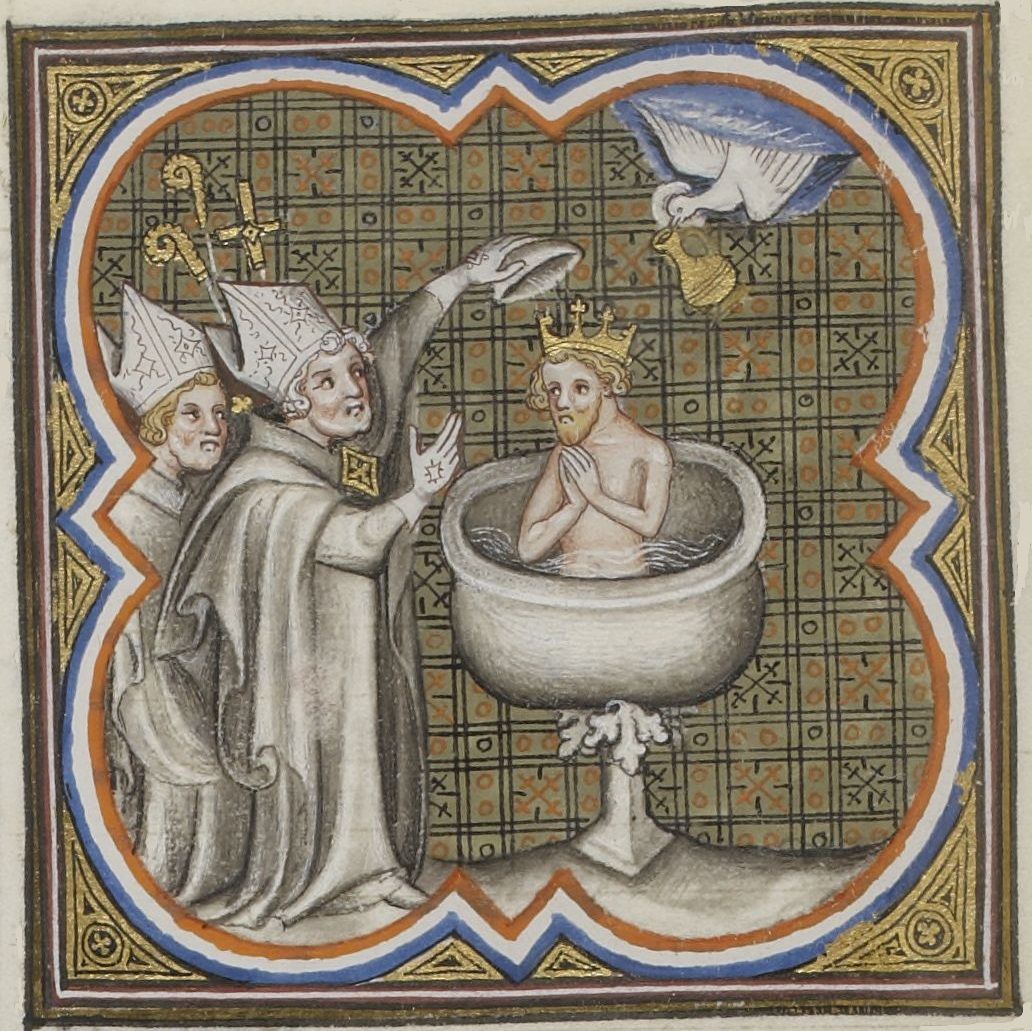
Aug 7
Church and Crown in Catholic France
One of the reasons that Catholic France is sometimes called the Eldest Daughter of the Church is the longstanding relationship between the Church and the French kings. France wasn't the first officially Catholic kingdom, but the French Crown established a close relationship with the Church early on that would be a defining factor in the history of both for over a thousand years.
The alliance of Church and Crown in France goes all the way back to the late fifth century. By this time, the Western Roman Empire was collapsing. Pagan tribes were pouring into what had been Roman Gaul. One of these tribes, the Franks, was establishing its dominance in the area. In this chaotic period, a bishop and a king laid the foundation of Catholic France.
The bishop was St. Remigius, an eloquent preacher and evangelist who was consecrated bishop of Reims, a city northeast of Paris, when he was only 22. The Catholic Church of his day was vying with both paganism and Arianism, a widespread heresy that denied the divinity of Christ. Arians were more numerous and often had more political clout than Catholics, since many of the chiefs of the invading tribes were converting to Arianism. In this context, Remigius began corresponding with the Frankish king who was consolidating his power over the region.
That king was Clovis I, who, though a pagan, was married to a Catholic, St. Clotilde. Clovis respected the rights of the Catholic Church in his expanding territories and was willing to listen to the bishop of Reims. Under the influence of Remigius and Clotilde, and after seeing his young son cured of a severe illness and achieving victory in what seemed to be a hopeless battle, Clovis became convinced that Catholicism was the one true religion.
The alliance of Church and Crown in France goes all the way back to the late fifth century. By this time, the Western Roman Empire was collapsing. Pagan tribes were pouring into what had been Roman Gaul. One of these tribes, the Franks, was establishing its dominance in the area. In this chaotic period, a bishop and a king laid the foundation of Catholic France.
The bishop was St. Remigius, an eloquent preacher and evangelist who was consecrated bishop of Reims, a city northeast of Paris, when he was only 22. The Catholic Church of his day was vying with both paganism and Arianism, a widespread heresy that denied the divinity of Christ. Arians were more numerous and often had more political clout than Catholics, since many of the chiefs of the invading tribes were converting to Arianism. In this context, Remigius began corresponding with the Frankish king who was consolidating his power over the region.
That king was Clovis I, who, though a pagan, was married to a Catholic, St. Clotilde. Clovis respected the rights of the Catholic Church in his expanding territories and was willing to listen to the bishop of Reims. Under the influence of Remigius and Clotilde, and after seeing his young son cured of a severe illness and achieving victory in what seemed to be a hopeless battle, Clovis became convinced that Catholicism was the one true religion.

Remigius baptized Clovis in 496 A.D., and this date is often cited as the founding of the nation of France. It was a decisive turning point in the country's religious history, the beginning of the end of paganism and Arianism in France, since it led many noblemen, soldiers, and ordinary people to convert to Catholicism. Clovis and his successors firmly established the kingdom of France and protected Catholics in their realm and beyond. The cathedral at Reims, St. Remigius's episcopal see, became the traditional location of the coronation of French kings. French bishops, taking after Remigius, would have strong religious and political influence in the kingdom. Three hundred years after Clovis, Charlemagne would unite most of Western Europe under the French monarchy and become the protector of the papacy. Church and Crown would remain closely linked until the French Revolution in the late eighteenth century.
The conversion of Clovis I forged an alliance of the spiritual and secular power in France that would last for more than a millennium. Though it was not without its negative consequences, this alliance made it possible for the Eldest Daughter of the Church to give birth to countless saints and Catholic cultural treasures during the middle ages. If you want to learn more about the story of Catholic France and its importance for the whole Church, enroll in LANE's fall course starting on September 11, 2023!
— Cory Lakatos, LANE Director of Communications
The conversion of Clovis I forged an alliance of the spiritual and secular power in France that would last for more than a millennium. Though it was not without its negative consequences, this alliance made it possible for the Eldest Daughter of the Church to give birth to countless saints and Catholic cultural treasures during the middle ages. If you want to learn more about the story of Catholic France and its importance for the whole Church, enroll in LANE's fall course starting on September 11, 2023!
— Cory Lakatos, LANE Director of Communications

A Ministry of Our Lady of the Lake Catholic Church
480 152nd Avenue, Holland, MI 49424
lanecatholic@oll.org
Privacy Policy and Terms of Use
Copyright © 2025